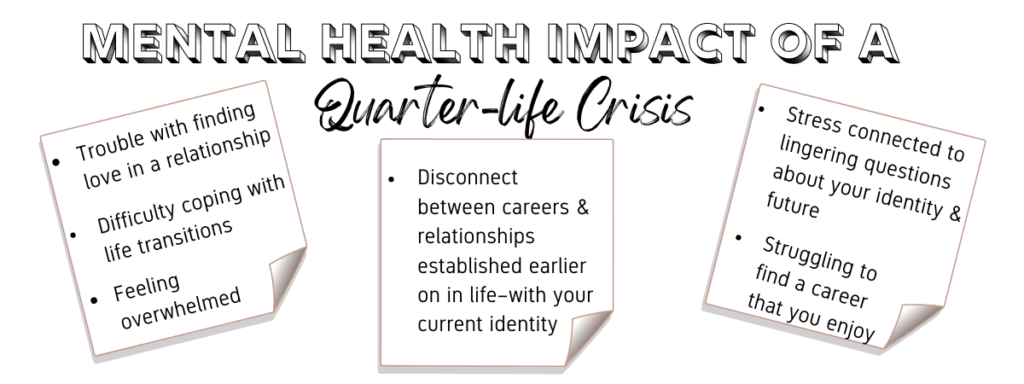People who are in their 20’s and early 30’s may be prone to a Quarter-life crisis.
This week we are defining Quarter-life Crisis, factors that contribute to someone experiencing a Quarter-Life Crisis, and its impact on a person’s mental health.
What is a Quarter-life crisis?
Growing up you may have heard about the Mid-life crisis. This was often stereotyped by people impulsively buying a sports car or having an affair out of the blue. A Mid-life crisis is characterized by re-identifying a sense of purpose and coming to terms with aging.
A Quarter-life Crisis is a phenomenon that can sometimes occur when people are in their 20’s and early 30’s.

What are contributing factors to someone experiencing a Quarter-life Crisis?
An increase of adults waiting to have children and/or get married until late 20’s-early 30’s, which has resulted in
- More time to have new and diverse life experiences
- More exploration of identity, life roles, and relationships
The societal push for young adults to pursue higher education. Pursuing higher education often results in high student loan debt and creates additional stress for this age group.
How does a Quarter-Life Crisis impact Mental Health?
Leading up to a Quarter-life Crisis, individuals are often faced with feelings of uncertainty and intense emotions when trying to establish concrete life roles.

Contact AACA if you are not currently seeing a clinician and you would like to meet with one of our therapists to work through concerns related to Quarter-Life Crisis.






